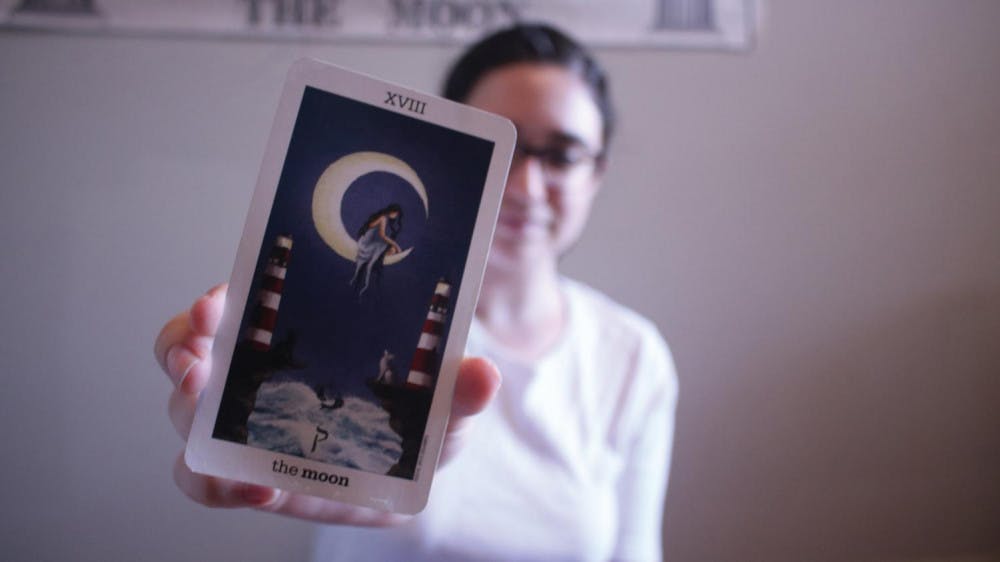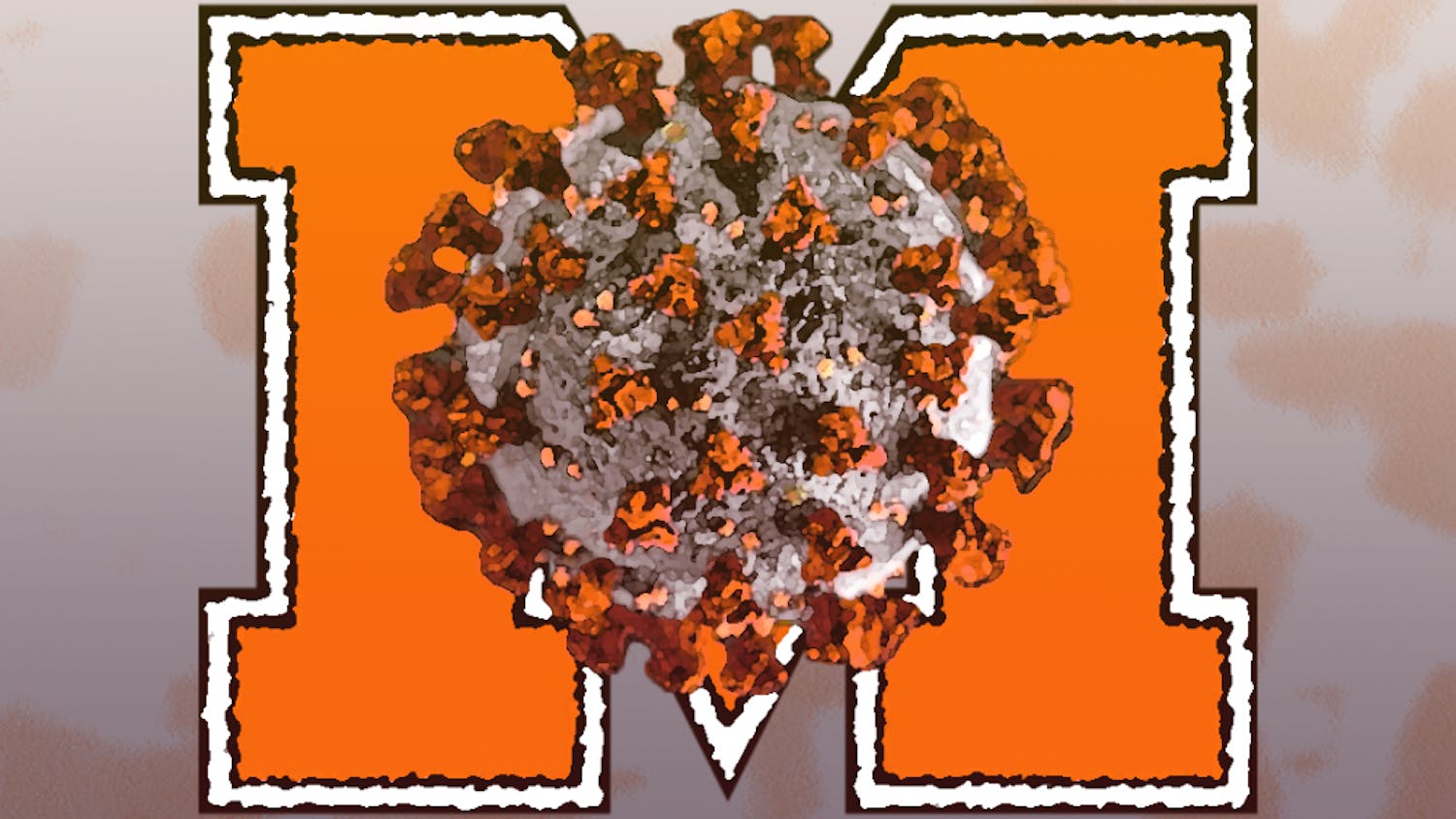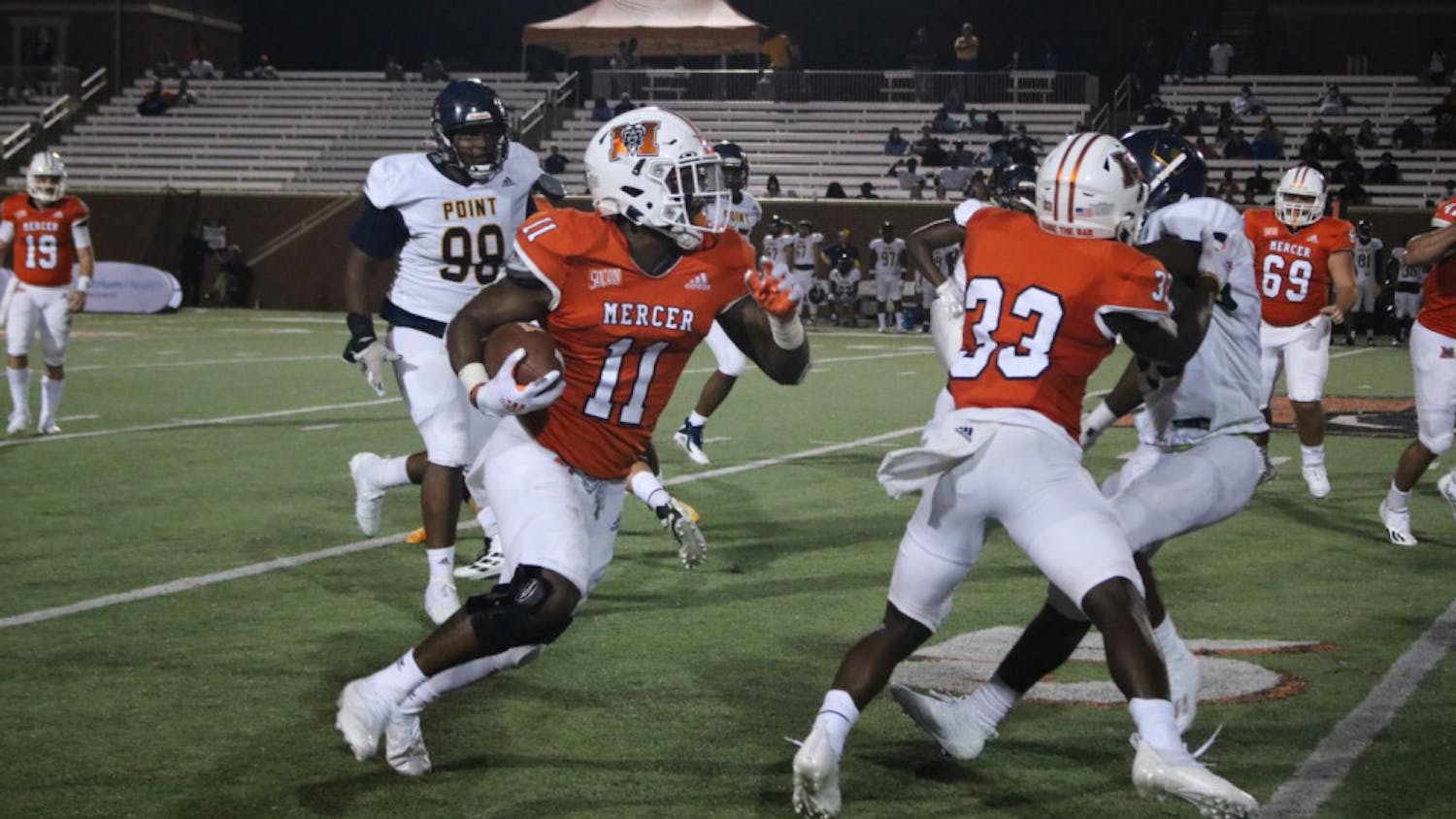As astrology has hit the mainstream, from horoscopes in Cosmopolitan to apps like Co-Star and Astro Guide, tarot card readings have also grown in popularity. Tarot readers looking for cards used to be limited to metaphysical shops and certain Etsy stores, but today, major retailers like Urban Outfitters and Barnes & Noble — even the one in Macon! — sell decks.
Like asking someone their zodiac sign, reaching for a tarot deck when life gets confusing isn’t considered as strange as it once was. But what is the tarot, and how is it really used?
A lot of folks think that the point of tarot is to tell your future. In my experience, though, they can only guide you in deciding how you want to shape your own future by helping you access your intuition.
At the risk of oversimplifying a complex system, consider this: have you ever flipped a coin to make a decision, been disappointed with the results and realized that the other option was the outcome you really wanted?
That’s the same way the tarot works.
However, they can apply to more complex issues than a yes or no, should I or shouldn’t I situation, and learning to intuit what the cards represent takes time, effort and dedication.
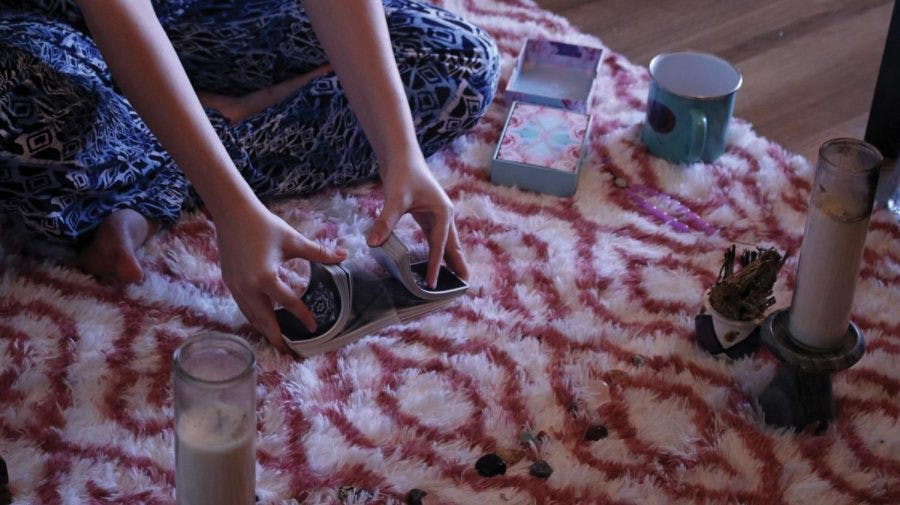
Emily Rose Thorne shuffles her tarot cards.
Let’s get down to the basics. A traditional tarot deck contains 78 cards, 22 of which comprise the Major Arcana. The rest fall into the Minor Arcana. You’re probably most familiar with Major cards, like The Fool, The Sun, The Moon, Death and The Lovers.
Major cards refer to important life events, transitions and transformations; for example, Death refers to a period of rebirth and is often represented by a phoenix rising from the ashes, while The Fool usually indicates the start of a new journey, experience or phase of life, characterized by childlike innocence, excitement and naïveté.
The majority of tarot cards consist of the Minor Arcana. These cards refer to day-to-day experiences, feelings and situations, and their meanings can be devised by considering their separate parts: suit, number and Court rank.
The four suits of the tarot are Cups, Wands, Swords and Coins, which are sometimes called Pentacles. Cups represent emotions, interpersonal relationships, intuition and the element of Water; Wands signify elemental Fire, personal will, energy, and creativity; Swords represent danger, power, intellect, cunning and the Air element; and Coins stand for Earth energy, grounding, physical sensation and worldly experiences such as accumulating wealth.
From there, the number on the card helps you understand to what extent the keywords of the Suit are being evoked:
- Aces are the idea or potential behind the idea.
- Twos are the very beginning of its application.
- Threes are initial structure of a plan, project, or cycle.
- Fours represent it starting to stabilize.
- Fives indicate troubles or disorganization along the way.
- Sixes imply difficulty with balance.
- Sevens show the first sight of completion.
- Eights suggest problem-solving.
- Nines imply the ending of the cycle.
- Tens appear upon completion.
After Tens come Princesses or Pages, Princes or Knights, Queens and Kings, known as Court Cards or Royal Arcana. Princess and Pages are youthful, embodying new perspectives on the traits associated with the suit. Princes and Knights represent a potential imbalance, moments of high energy mixed with bouts of procrastination. The Queen is the most mature embodiment of her suit and leads with intention, while the King leads with swiftness and setting boundaries.
If you want to start reading tarot, the first thing you’ll need is a deck. You can purchase a deck at plenty of retail stores, as I mentioned before, but if you’re willing to look a little harder you can find beautiful decks created by independent artists online.
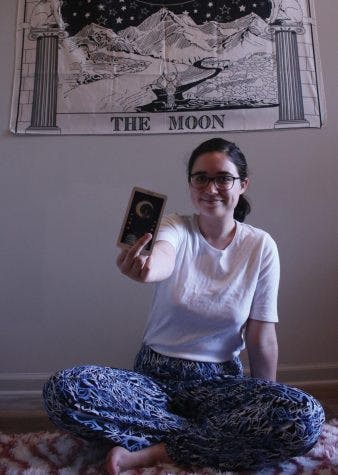
Emily Rose Thorne sits in front of her Moon tarot tapestry while holding The Moon tarot card.
Some indie decks I like are The Tarot, psychedelic-art-themed cards by Oliver Hibert, and Fifth Spirit Tarot, a queer re-imagining of the traditionally gendered tarot by non-binary artist Claire Burgess. You can also pick up a deck from a metaphysical store, like Modern Mystic Shop at Ponce City Market in Atlanta, or on Amazon or Etsy.
Artists create decks with any theme you can imagine: cats, intersectional feminists throughout history, space, African-American icons, Harry Potter, flowers, Judeo-Christian religious figures and even anime. If a tarot deck is too expensive (a produced deck retails for about $45), you can also draw your own cards based on the archetypes or download a free tarot app (I use Golden Thread and Mystic Mondays).
Then you need to figure out what to ask! For some people, this is easier said than done. It can be hard to ask a question that’s both specific enough and broad enough for a combination of 78 cards to clearly answer. That’s why many tarot readers use spreads.
A spread is essentially a way of organizing the cards you pull in a specific order where each card answers a specific question based on its placement in the spread. Some examples include the iconic Celtic Cross, which calls for 10 cards, or a simple Past/Present/Future spread, which only requires three.
There are also spreads for different areas of your life if you just need a full rundown in one area: career, love life, academics, mental health or anything else. Some social media influencers share spreads on their accounts; some of my favorites are Emerald Lotus Divination and Biddy Tarot.
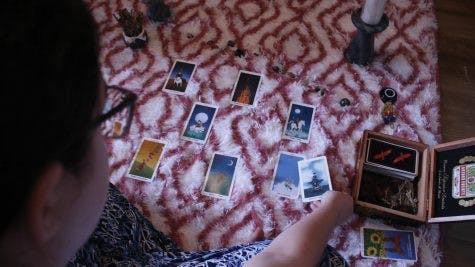
Emily Rose Thorne reads her weekday spread with the Sun And Moon tarot deck by Vanessa Decort.
If you do have a specific question, just make sure to keep it open-ended. When I’m asking the cards about a decision I have to make, I pull one card to answer, “what will my experience be if I choose option A?” and another for option B. Then, I select a third to describe what can help me make the choice between the two. Yes-or-no queries like, “should I go to this event?” or “should I drop this class?” are a bit too limiting. The cards can’t tell the future, so try not to ask things like, “will my ex come back?” either.
It might feel awkward the first time you perform a tarot reading, especially if you have to follow a spread you find on Instagram, Google every card or look up their meanings in a book. That’s okay, though; it’s part of the learning process, and I still like to research cards when I do my readings just to be sure I’m considering every perspective.
Remember, it’s totally fine if you only turn to the tarot when you’re facing a particularly confusing issue or challenging situation. And of course, some people just use them for fun.
If you’re into the idea of tarot but not sure you’re ready to read cards for yourself, just pick up the next issue of The Cluster and look for Clusterscopes in the Lifestyle section! I’ll start pulling a card for each zodiac sign, so make sure you know your Sun, Moon and Rising signs. You can use an online natal chart creator like the one at CafeAstrology to help you figure yours out.

